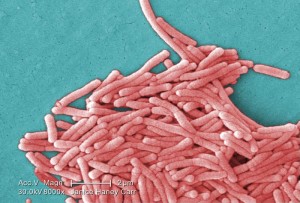By: Jory Lange
A second cluster of Legionnaires’ disease victims has been reported in Manhattan’s Washington Heights neighborhood. On Friday, the New York City Health Department reported that eight New Yorkers in lower Washington Heights have been hospitalized with Legionnaires’ Disease within the last five days. No one has died.

This is the second Legionnaires’ disease outbreak to strike lower Washington Heights this year. In July, 27 people became seriously ill with Legionnaires’ disease in this same Manhattan neighborhood. Many people were hospitalized. 1 person died.
The Health Department identified a cooling tower in the Sugar Hill development as the source of the earlier outbreak. The Health Department has now instructed the Sugar Hill residential development to disinfect and clean the cooling tower, again.
Legionnaires’ disease is a serious form of lung infection. It is caused by breathing in droplets of water that have been contaminated with Legionella bacteria. Symptoms usually begin within 2 to 10 days. Symptoms may include headaches, muscle pain, chills, fever over 104 degrees. After 2 or 3 days, additional symptoms may begin, such as shortness of breath, a cough that can become bloody, chest pain, nausea, vomiting, diarrhea, and mental confusion. People over the age of 50 tend to be the hardest hit by this serious lung infection.
Anyone experiencing Legionnaires’ disease symptoms should seek immediate medical help. Antibiotics can help curb the infection.
- Balamuthia infection linked to nasal irrigation: Study
- Massachusetts West Nile virus: Most cases ever recorded in a single year
- St. Petersburg, Florida: Working Cow Homemade Ice Cream recalled due to potential Listeria
- HPV vaccine: Gardasil 9 approved for use in women and men aged 27 through 45 years
- Meningococcal meningitis: Syracuse student tests positive for serogroup B
- Trichomoniasis: 7-day-dose metronidazole should be the preferred treatment in women
- Outbreak of Legionnaires’ Disease Cases in New York State



Cases like this serve as a reminder of the issues with Cooling Towers and how crucial it is to manage the risks they bring. A similar story was reported last year at Disney where they had to close there Cooling Towers due to a case of Legionnaires Disease – https://hubs.ly/H0dVKtS0